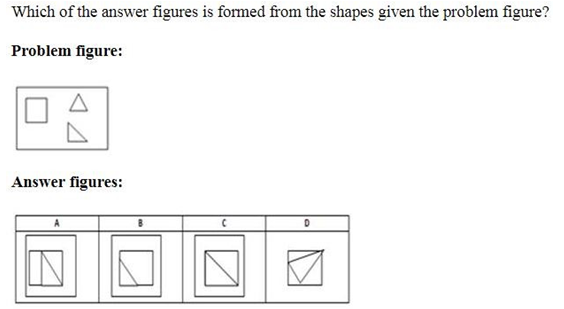Question
Statements:All jackets are collars. All collars
are shirts. All chains are shirts. Conclusions:I. No collar is chain. II. Some collars are chains. III. Some shirts are jackets. IV. Some chains are jackets. In each question below are given some statements followed by four conclusions numbered I, II, III and IV are given. You have to take the three given statements to be true even if they seem to be at variance with commonly known facts and then decide which of the given conclusions logically follows from the two given statements, disregarding commonly known facts.Solution
All collars are shirts(A) + Some shirts are chains(I) ⇒ No conclusion. Hence conclusion I and II does not follow but they will make a complementary pair. Hence either conclusion I or II follows. All jackets are collars(A) + All collars are shirts(A) ⇒ All jackets are shirt(A) ⇒ Conversion ⇒ Some shirts are jackets(I). Hence conclusion III follows. All jackets are collars(A) + All collars are shirts(A) ⇒ All jackets are shirts(A) + Some shirts are chains(I) ⇒ No conclusion. Hence conclusion IV does not follow.
- Simplify:- 100 ÷10-[-2+{-9+(3-6 of 2)}]=.
In the question given below, a passage is followed by three statements which may or may not be inferred from the passage. Select the correct combinatio...
A person bought a mobile phone at a 10% discount. If he had bought it at a 20% discount, he would have saved ₹3000 more.
Find the market price ...
In the venn diagram given below, how many cricketers are not artist?
17 मई 2000 के 5 दिन पहले बुधवार था तो 2 व्बजण् 1999 को क्या दिन होगा ?
- Which of the following is not an input device?
- The fourth proportional to 10, 40, and 15 is complete it?
In a row of 60 students, Preeti sits 31st from the right end of the row. If Preeti shifted 13 places towards left, then what is her new posit...
Out of his monthly income of Rs. 30,000, Arjun spent (R - 5)% on rent, (R + 10)% on others and saved Rs. 6,000. Find R% of his monthly income.
Relevant for Exams:


